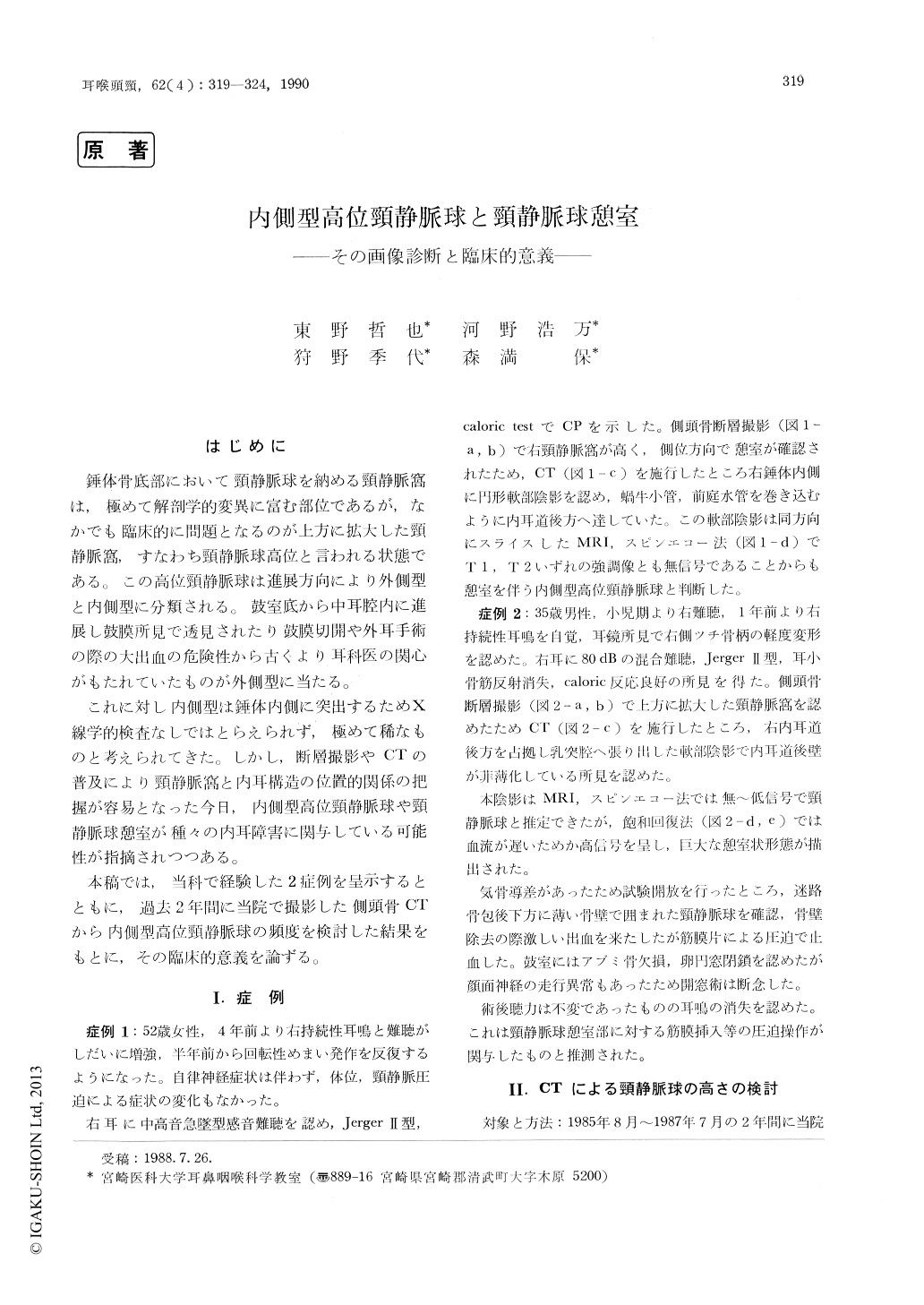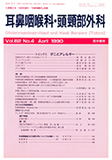Japanese
English
- 有料閲覧
- Abstract 文献概要
- 1ページ目 Look Inside
はじめに
錘体骨底部において頸静脈球を納める頸静脈窩は,極めて解剖学的変異に富む部位であるが,なかでも臨床的に問題となるのが上方に拡大した頸静脈窩,すなわち頸静脈球高位と言われる状態である。この高位頸静脈球は進展方向により外側型と内側型に分類される。鼓室底から中耳腔内に進展し鼓膜所見で透見されたり鼓膜切開や外耳手術の際の大出血の危険性から古くより耳科医の関心がもたれていたものが外側型に当たる。
これに対し内側型は錘体内側に突出するためX線学的検査なしではとらえられず,極めて稀なものと考えられてきた。しかし,断層撮影やCTの普及により頸静脈窩と内耳構造の位置的関係の把握が容易となった今日,内側型高位頸静脈球や頸静脈球憩室が種々の内耳障害に関与している可能性が指摘されつつある。
Recent advances in temporal bone tomography and CT have revealed that a medially situated high jugular bulb, which extends upward into the medial part of the petrous bone, is not a rare anatomical condition. In a series of patients undergoing temporal bone CT, the jugular fossae were found to be extending above the round window in 18% of the patients. A jugular bulb diverticulum was often associated with a very high medial jugular fossa. We found that inner ear symptoms were possibly caused by the effect of the high bulb on the vestibular aqueduct inone case and on the internal acoustic meatus in another case. MRI may be of value in differen-itating a high bulb from a glomus tumor.

Copyright © 1990, Igaku-Shoin Ltd. All rights reserved.


